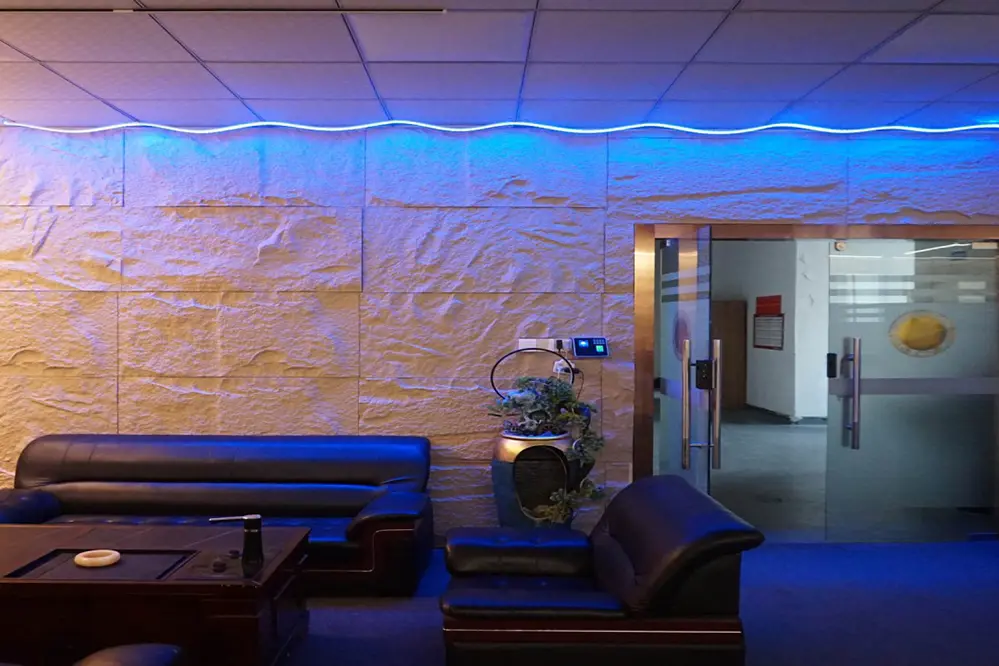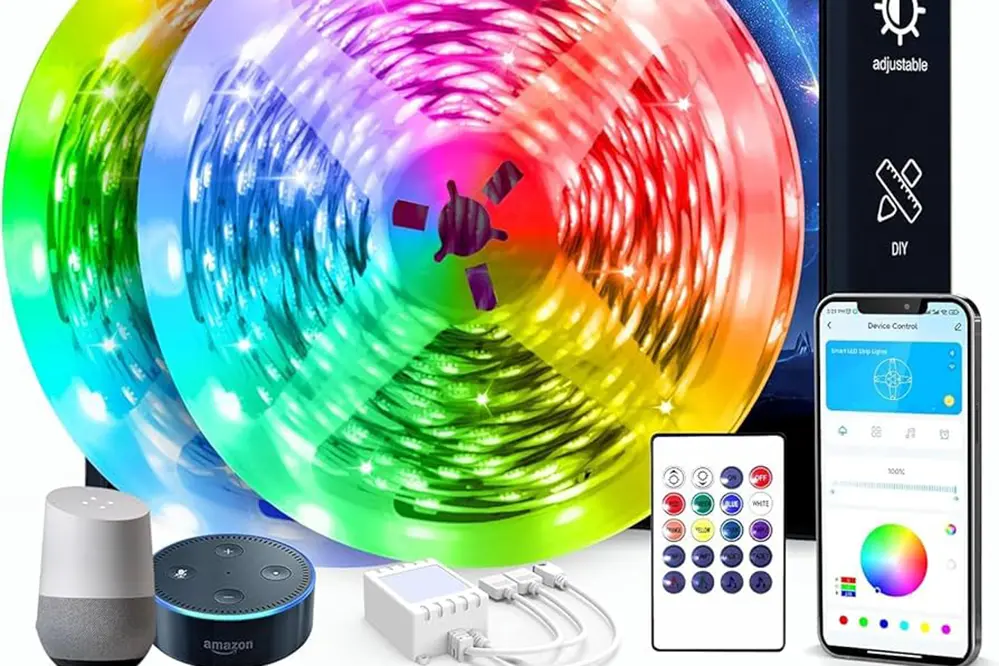In the heart of bustling cities, where architecture meets artistry, the types of facade lighting employed can transform ordinary buildings into extraordinary landmarks. This captivating interplay of light and structure, often incorporating rgb systems for a full spectrum of colors, not only highlights the importance of aesthetic appeal but also plays a crucial role in defining a building’s identity. Facade lighting is more than just a decorative element; it is a strategic tool that architects and designers use to craft visual stories that captivate and inspire.
The significance of facade lighting extends beyond mere beauty. According to the Lighting Research Center, well-designed architectural lighting can increase foot traffic by up to 20% in commercial areas, underscoring its potential economic impact. Moreover, advancements in LED technology have made facade lighting more energy-efficient and sustainable, aligning with global efforts to reduce carbon footprints. This makes facade lighting an essential consideration in urban planning and development.
As we delve into this guide, we will explore the various techniques and technologies that define facade lighting, from traditional uplighting and downlighting to cutting-edge dynamic systems. Join us as we illuminate the path to understanding how these lighting strategies can elevate architectural design and contribute to a more vibrant urban landscape. Discover how you can harness these techniques to transform any structure into a masterpiece of light and shadow.
Understanding Facade Lighting
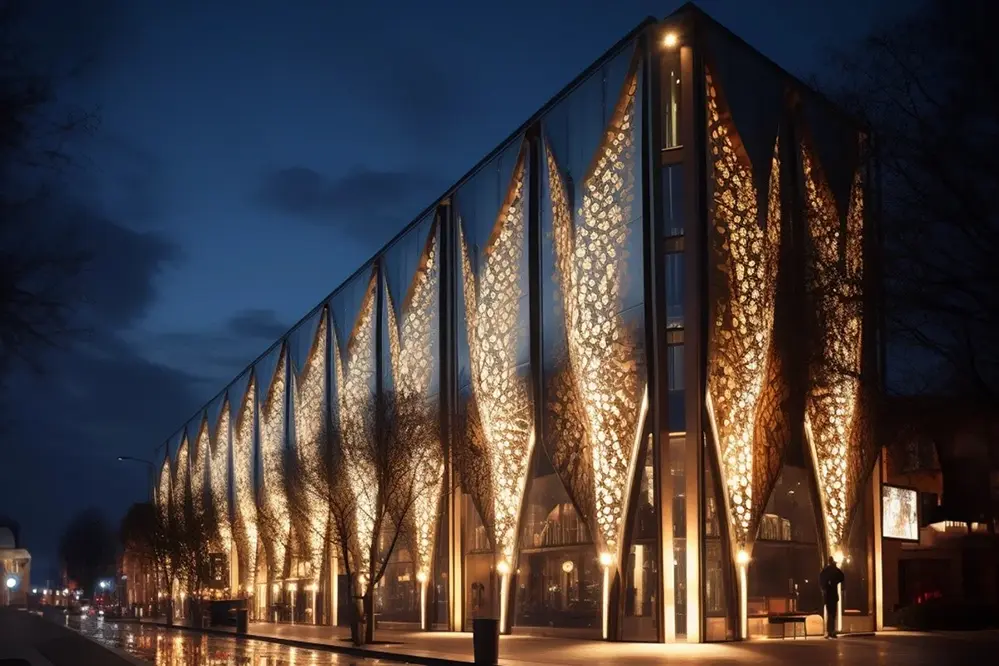
Understanding facade lighting involves exploring how light interacts with architectural features to accentuate, enhance, and reveal layers of design.
This interplay of light enhances structures, creating visually striking landmarks.
Different types of facade lighting can transform architectural aesthetics through diverse techniques that cater to a variety of creative, functional, and environmental needs.
By mastering facade lighting, architects and designers can craft a vision that not only highlights the beauty of structures but also contributes to sustainable urban environments. Whether through subtle highlights or bold, sweeping illuminations, facade lighting thrives on innovation that captivates viewers while respecting the essence of architecture.
Importance of Facade Lighting
Facade lighting holds an essential place in architectural design, serving as a vibrant beacon that transforms static structures into living entities, emanating a captivating narrative during both night and day.
These lighting systems go beyond merely serving a decorative role.
Specifically, facade lighting enhances a building’s visibility and prominence, especially at twilight or in urban environments inundated with towering edifices.
Furthermore, it establishes a unique identity for buildings, harmonizing their illumination with the surroundings to create cohesive cityscapes.
Beyond aesthetics, facade lighting can contribute to energy efficiency, employing innovative technologies that minimize electricity usage while maximizing visual impact and setting functional and inspirational precedents for sustainable design.
Indeed, the artful use of light transcends mere embellishment—it’s an essential architectural strategy for modern cities. Facade lighting becomes a defining hallmark, elevating structures to become focal points of the urban landscape.
Types of Facade Lighting Systems
Facade lighting systems are indispensable for emphasizing a building’s architecture, highlighting its defining features like lines, curves, and multi-faceted surfaces. These systems can include uplighting, downlighting, and wall-grazing, each precisely calibrated to add layers of depth and drama that speak of the building’s character.
These lighting techniques strategically sculpt the ambiance, elevating the overall perception and allure of the building, and supporting the architectural storytelling of any urban space they illuminate.
Uplighting Techniques
Uplighting techniques utilize lights positioned at ground level—casting a luminous glow upwards to accentuate architectural elements.
Uplighting not only enhances the beauty of tall structures, but also increases safety by illuminating walkways.
By thoughtfully directing light, uplighting draws attention to building features, creating a striking and sophisticated appearance. This method highlights textures and forms, imbuing the facade with dynamic visual interest.
Uplighting is particularly effective in highlighting vertical features—lending a dramatic flair and elevating the architectural dialogue—significantly enhancing the night-time cityscape’s enchantment.
Downlighting Techniques
Downlighting techniques foster a soothing visual effect by directing illumination from above to emphasize architectural features. This approach elegantly complements the building’s design.
Strategically, this method highlights outdoor canopies and entrances, providing a welcoming glow.
The aim is to emphasize certain aspects of the architecture, accentuating textures and details with a curtain of light cascading downwards. This approach enhances visibility, security, and aesthetic appeal, significantly contributing to the narrative and aura the building projects.
When allocating downlighting, precision is key to avoid glare and ensure a cohesive balance of light. By focusing the light beam to “wash” facades with a gentle luminescence, these techniques can highlight cornices, moldings, or any defining edges. Used effectively, downlighting not only showcases craftsmanship but also creates a seamless connection with surrounding landscape and pathways, ensuring both function and beauty consistently align.
Grazing Lighting Methods
Grazing lighting methods captivate audiences by accentuating the textures of architectural surfaces through strategic light placement.
In recent years, Stephen Auger, a revered lighting design consultant, highlighted how grazing techniques can transform plain facades into striking visual narratives by illuminating their natural textures. Without altering the inherent character of the structure, grazing provides depth and drama, allowing architects to highlight undulating surfaces, wave-like patterns, and intricate details.
To achieve this dynamic effect, light sources are placed at a close proximity to the building’s surface. This method creates elongated shadows that play across the facade, enhancing the visual perception of depth and contrast, which can reveal grooves, cracks, and other textural elements that often go unnoticed, elevating architectural appreciation to an art form.
Careful consideration of the angle and intensity is crucial to avoid over-illumination and ensure that the subtlety of the design is preserved. By placing lights at a five-degree angle relative to the facade, sharp shadows are softened into captivating washes, crafting an inviting and engaging environment that respects both form and function.
At night, grazing lighting captures the architectural essence, offering a mesmerizing interplay of light and shadow.
Spotlighting for Accents
Spotlighting casts a focused brilliance on architecture.
This type of facade lighting shines with intense clarity. It draws attention to unique architectural elements such as columns, statues, or textured panels. By concentrating light in specific zones, spotlighting enhances the aesthetic appeal of a building, creating a dramatic visual impact that captivates viewers.
Spotlighting allows for precision in highlighting art.
This lighting style transforms buildings into canvases – just as an artist uses a brush to create distinction, spotlighting uses light to accentuate architectural features with breathtaking elegance. The result is a visually arresting yet cohesive exterior that demands admiration.
In the grand palette of facade illumination, spotlighting offers endless creative opportunities for architects. With advancements in LED technology by the new year, designers can achieve color temperatures and brightness levels previously unattainable, opening up new vistas for artistic expression in the urban architectural landscape. Harnessing this technology, spotlighting invites innovation and inspiration, blending art and architecture seamlessly into the night.
Wall Washing for Uniformity
Wall washing is a transformative lighting technique that enhances the aesthetics of architectural facades by providing a uniform, luminous glow.
- Consistent Illumination: Provides even light coverage across the surface, minimizing shadows.
- Enhances Texture: Highlights the texture and detail of the building’s facade.
- Increases Visibility: Boosts the visibility of buildings, improving safety and nighttime appeal.
- Energy Efficient: Modern LEDs ensure sustainability while delivering stunning visual effects.
This technique generates a serene ambiance by evening out disparities, allowing architecture to shine in its true form.
By creating an even wash of light, wall washing brings out the inherent beauty of structures, giving them a majestic and coherent presence at night.
LED Technology in Facade Lighting
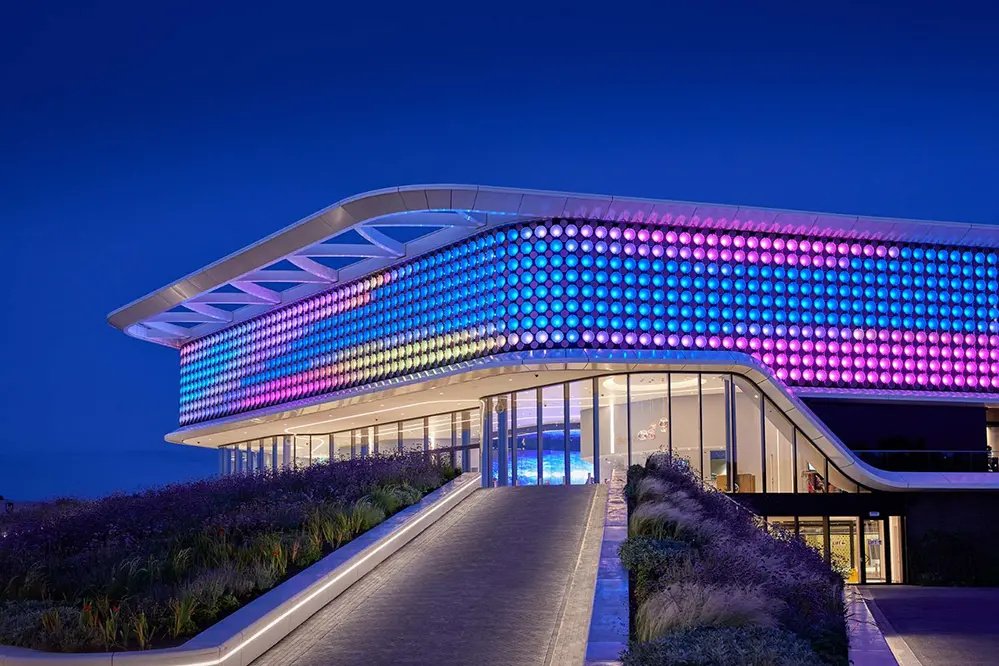
LEDs have revolutionized facade lighting.
Their efficiency and versatility make them ideal for facades. LEDs consume significantly less power than traditional lighting sources, aligning with modern demands for energy-efficient solutions, essential for a sustainable future. Furthermore, they open up an array of possibilities in terms of color and dynamic light displays to enliven architectural presentations.
LEDs are pivotal in vibrant facade transformations.
They create breathtaking visual experiences—whether it’s bathed in a subtle glow or animated with intelligent light sequences, LED technology offers captivating opportunities. Facade lighting can now be precisely controlled, allowing for customizable illumination designs that reflect the unique identity of each architectural work.
The advancements in LED technology unleash a world of potential, allowing architects and designers to experiment and innovate more than ever before. As of the new year, designers have increasingly embraced LEDs as a staple in their toolkit, pushing forward sustainable yet artistic lighting solutions that promise to redefine urban skylines.
Energy Efficiency in Architectural Illumination
Energy efficiency lies at the heart of modern architectural lighting, underscoring the mandate for sustainability and smart consumption.
In recent years, as architectural lighting has become an essential design element, achieving energy efficiency has emerged as a top priority. The benefits of integrating efficient light sources extend beyond cost savings, fostering reduced environmental impact and heightened performance. A focus on energy efficiency not only enhances aesthetic appeal but also aligns with global initiatives toward reducing carbon footprints.
LED technology stands as a cornerstone of energy-efficient architectural lighting. By utilizing LEDs, buildings can achieve impressive façades that are both captivating and energy-conservative. This synergy between design and efficiency creates an architectural narrative that harmonizes environmental responsibility with visual allure.
Moreover, advanced lighting controls further enhance energy efficiency, allowing dynamic scaling of light intensity in response to various environmental factors. This adaptiveness results in optimum energy usage while maintaining visual consistency and architectural integrity. The promise of energy-efficient architectural illumination lies in its dual capacity to illuminate spaces brilliantly while treading lightly on natural resources, encouraging a brighter, more sustainable future.
Facade Lighting and Building Safety
Facade lighting intertwines with building safety seamlessly.
Effective lighting not only enhances aesthetic appeal but significantly bolsters safety. By illuminating building exteriors, these systems enhance visibility, allowing for clearer observation and identification of potential hazards. Consequently, they serve as both a deterrent to unlawful activities and a facilitator of swift responses during emergencies.
Such illumination aids in guiding patrons safely around premises.
Facilitating safe passage for pedestrians and vehicles alike, well-designed facade lighting underscores pathways, illuminating potential obstacles that may otherwise remain unnoticed. Consequently, it ensures that buildings are not only visually remarkable but also guardians of public safety.
Incorporating innovative lighting designs transforms a simple facade into an extraordinary sentinel, significantly elevating the safety and reliability of architectural wonders. By committing to advanced facade lighting solutions, architects and designers ensure that the structures of tomorrow illuminate the night with a dazzling yet secure brilliance.
Aesthetic Benefits of Facade Lighting
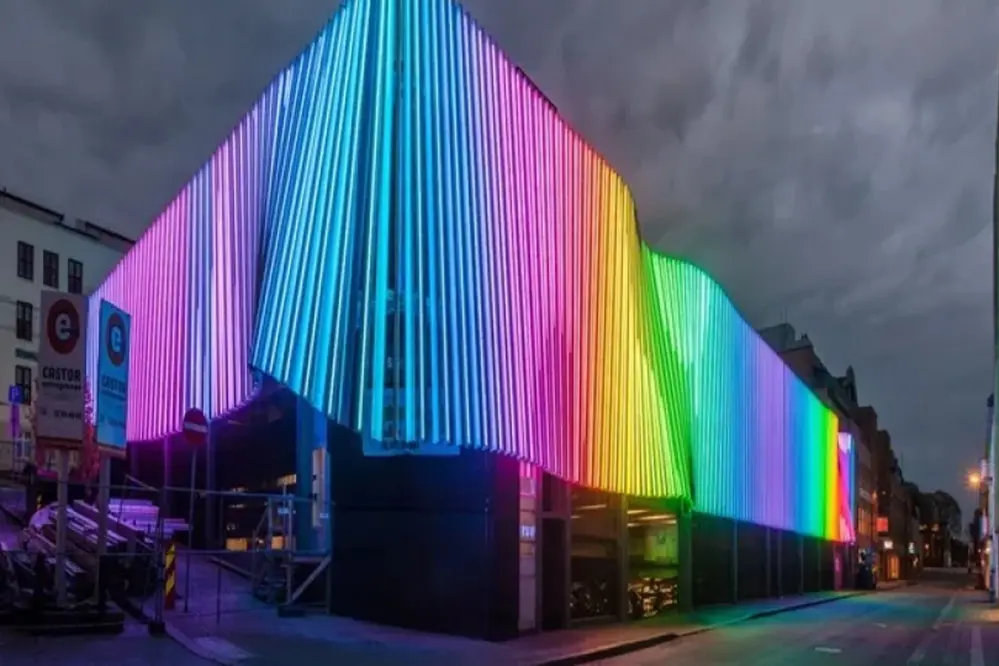
Facade lighting, with its transformative capacity, serves not only as a function of visibility but as an artistic endeavor that breathes life into the structures it illuminates. It accentuates architectural marvels.
These lighting techniques tailor the visual emphasis to the building’s unique characteristics, available to be viewed under various conditions.
Emphasizing, lighting design has the power to highlight key features, while at the same time, some are intentionally subdued to maintain balance.
Lighting choices allow for creative expressions, elevating structures by adding depth and dynamic layers that enthrall viewers, capturing their imagination and admiration.
Such designs can dramatically alter perceptions, veiling structures in shadows or casting bold highlights, resulting in architectural reflections, becoming focal points of urban identities.
Ultimately, the art of facade lighting is as enchanting as it is functional. Impeccable illumination bestows Architectural landmarks the gravitas to inspire awe, becoming timeless symbols that celebrate art and structure.
Choosing the Right Lighting for Your Building
Selecting the appropriate facade lighting is pivotal, shaping the experience and visual impact of your building.
When choosing, it’s vital to consider not only aesthetic preferences but also practical requirements. Analyze your building’s architectural features, ensuring the lighting complements and enhances them without detracting from their inherent beauty. Different types of facade lighting can create various visual effects, from subtle elegance to dramatic flair. These choices significantly influence how your building is perceived and experienced in its environment.
Furthermore, think about the role of energy efficiency in your decision. Energy-efficient solutions, such as LED technologies, provide long-lasting and environmentally friendly options that align with today’s sustainable building practices.
Beyond aesthetics and sustainability, it’s imperative to factor in technological advancements that offer programmable lighting systems. These systems allow you to dynamically adjust settings, tailoring the ambiance to suit occasions or seasonal themes. By choosing wisely, your building can become a beacon of innovation, engaging onlookers with its sophisticated interplay of light and shadow, ultimately enhancing the architectural narrative.
Installation Considerations for Facade Lighting
When embarking on facade lighting installation, meticulous planning is crucial to align with architectural aesthetics and functionality.
In recent years, advancements in lighting technologies expanded possibilities, prompting designers to explore creative, cost-effective applications. These developments necessitate understanding site-specific conditions, including facade material, ambient light levels, and installation logistics.
While it’s not solely about aesthetic appeal, a designer’s expertise in matching a lighting solution to the building’s texture, color, and surface intricacies is invaluable. Evaluate the available power sources and routing to ensure optimal fixture placement and wiring accommodation without visible disruptions.
Timing and coordination with other construction phases ensure successful integration, making sure to address issues early. Additionally, it’s vital to consider maintenance complexities, such as accessing hard-to-reach fixtures, and selecting durable, weather-resistant equipment.
An integrated approach with precise execution can transform the ordinary into the extraordinary through facade lighting.
Maintaining Facade Lighting Systems
Ensuring the longevity and performance of facade lighting systems requires regular inspections, timely replacements, and strategic planning to minimize disruptions. Proactive upkeep can significantly enhance their visual impact.
Routine maintenance should focus on the lighting components that are most susceptible to environmental elements.
Adopting a comprehensive approach ensures not just functionality but the consistent aesthetic brilliance of the facade.
Technicians must be adept in recognizing potential issues early on, ensuring cost-effective preventive measures.
Keeping an updated maintenance log is essential for tracking the performance and any adjustments made to the lighting system. This practice ultimately reinforces a long-term sustainable strategy.
In conclusion, the key to preserving a facade’s brilliance lies in diligence and foresight. Meticulous maintenance guarantees that the facade lighting continues to inspire and captivate.
Costs Involved in Facade Lighting Projects
Facade lighting projects can vary widely in cost depending on the scale, complexity, and technologies utilized, but they typically require a robust investment to achieve.
Installation costs may include high-quality fixtures that withstand various weather conditions.
These expenses are complemented by system design fees, featured prominently when working with a team of architects and lighting experts who integrate aesthetic appeal, sustainability, and efficiency into their blueprints.
Furthermore, maintenance considerations play a vital role in the total cost over time. Incorporating energy-efficient fixtures not only represents an upfront investment but is essential for containing operational expenses in the long run. As such, industry insiders often gain a competitive edge by budgeting adeptly for both immediate and extended financial commitments, ensuring their projects radiate brilliance with consistent, economically sustainable illumination.
Innovations in Facade Lighting Design
The future of architectural lighting is illuminated by innovations transforming both aesthetics and functionality.
Facade lighting has embraced smart technology, allowing for dynamic illumination that adapts to surroundings and events. LED advancements have revolutionized color rendering and energy efficiency, providing brighter and more vibrant displays at a fraction of traditional lighting costs.
Designers now integrate sustainable materials, ensuring that solutions not only enhance beauty but also promote environmental conservation. With interactive systems, buildings can respond creatively to human interaction, fostering a greater connection between the structure and its community.
Architectural illumination, once solely about highlighting structural elements, now participates in storytelling. These innovations empower designers to transcend conventional limits, offering a more engaging visual narrative that captivates audiences worldwide.
In these ways, innovations in facade lighting design are redefining the skyline, paving the way for a luminous future.
Future Trends in Architectural Illumination
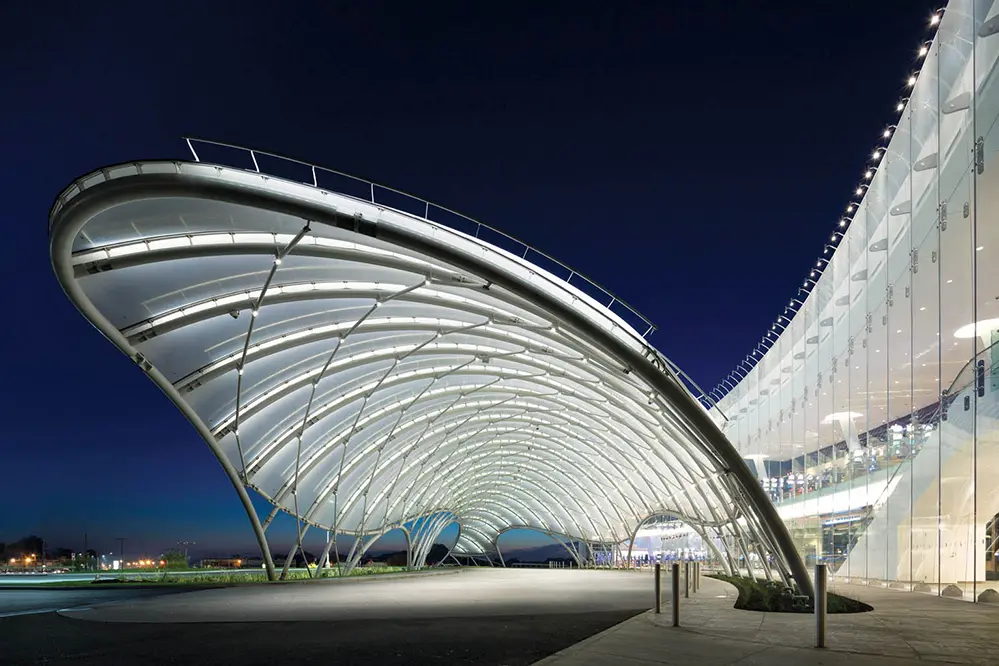
Looking ahead, architectural illumination is poised to redefine how we perceive spaces, opening a vibrant world of possibilities. As technology continues its relentless march forward, the potential for innovative design in facade lighting is extraordinary.
Artificial intelligence stands at the forefront of these transformation efforts. AI-driven lighting systems can adapt in real-time to various environmental stimuli and user preferences.
Furthermore, advancements in renewable energy will facilitate power generation for lighting systems. Solar-powered technologies, coupled with energy-efficient LEDs, will shape sustainable practices.
Another trend is the integration of augmented reality in facade lighting. This technology enables buildings to project dynamic digital visuals, changing the facade’s appearance seamlessly.
These future-facing trends have the power to enrich the urban landscape, creating immersive experiences. As creativity and technology converge, expect to see breathtaking innovations unfold.
Ultimately, the evolution of facade lighting reflects humanity’s innate desire to blend artistry with functionality. The synergistic growth of technology and design promises a future where architecture is both beautiful and intelligent.
Conclusion
Facade lighting is a transformative fusion of art and science, serving as a testament to human ingenuity and creativity. Each type of lighting offers unique characteristics that harmoniously enhance architectural aesthetics, illuminating iconic structures while complementing urban landscapes. This duality not only elevates our daily experiences but also inspires a deeper appreciation for the built environment.
As we delve into the advancements in facade lighting, it is crucial to remain curious and open to cutting-edge solutions. Understanding these innovations encourages the adoption of new technologies that honor both tradition and modernity. By balancing these elements, we can fully embrace the potential of architectural illumination to create dynamic and engaging spaces.
Looking to the future, facade lighting stands poised to redefine what is possible in architectural design. From accentuating architectural features to creating vibrant environments, these lighting techniques offer limitless possibilities. Bolstered by evolving technologies, facade lighting promises to illuminate the future with brilliance, creativity, and sustainability, paving the way for a brighter and more inspired world.

